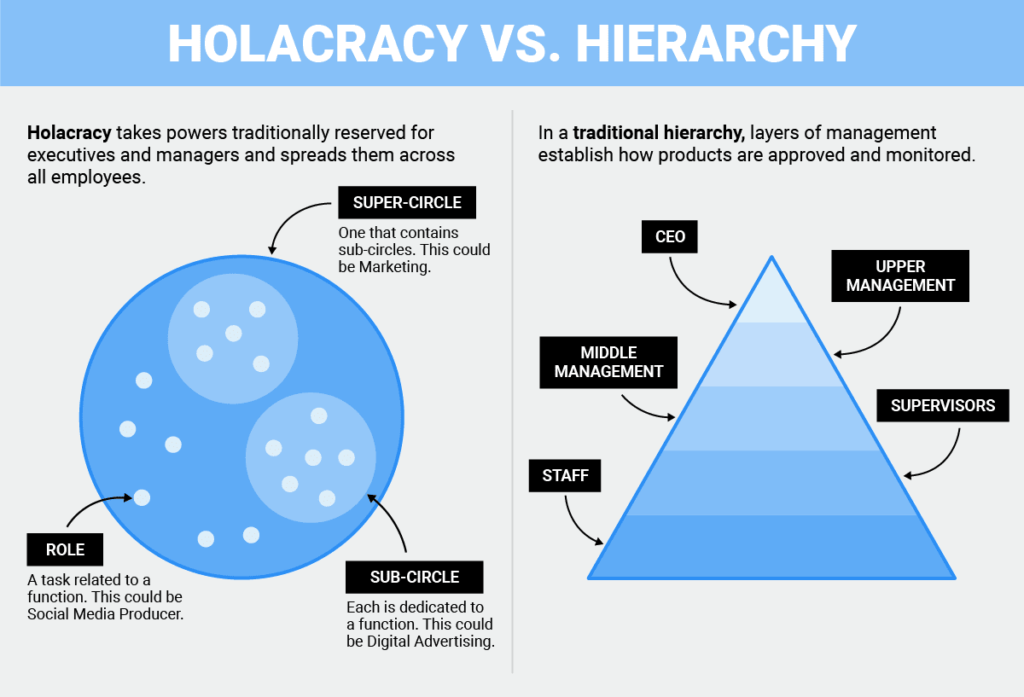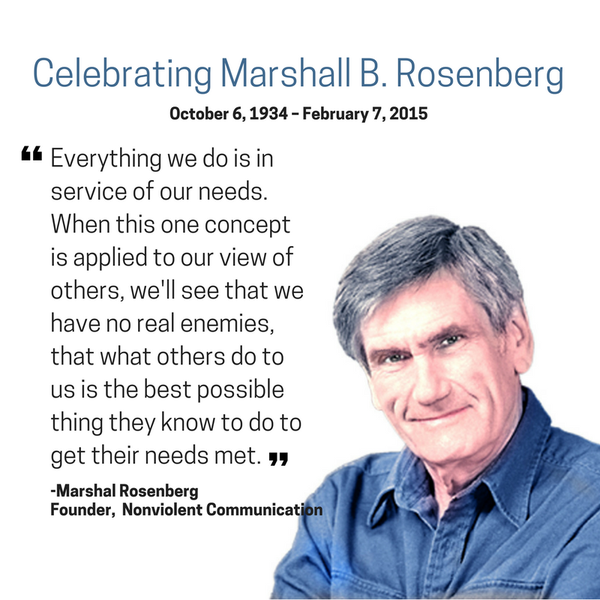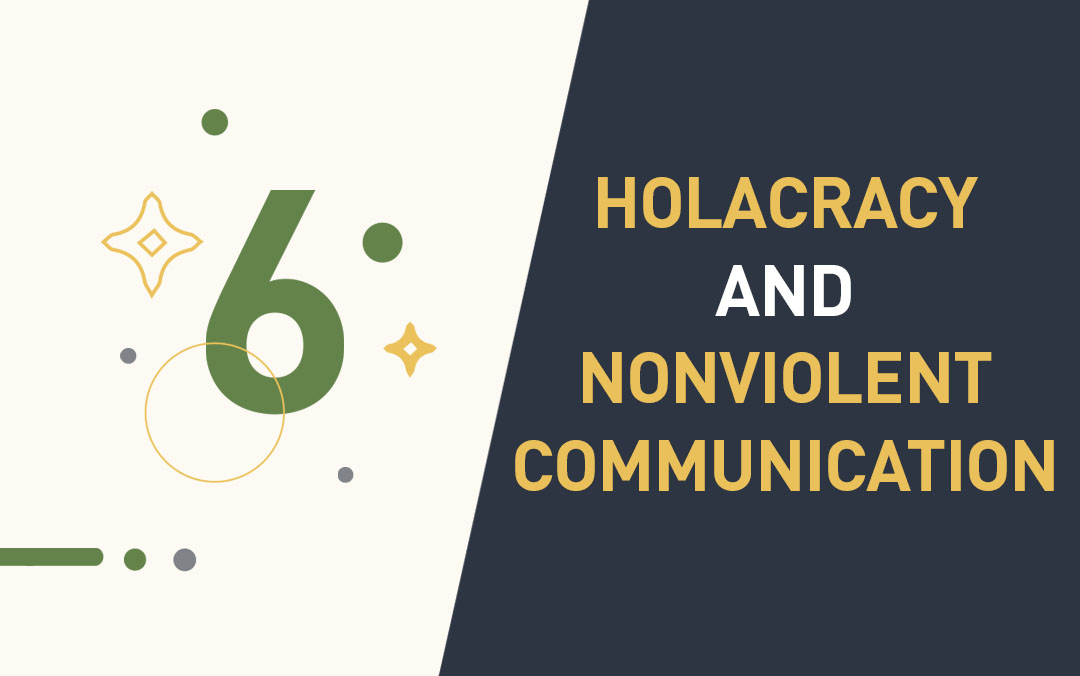I discovered Nonviolent Communication (NVC) in 2015, and then Holacracy in 2016. At the time I didn’t see the similarities between the two. But after some deeper practice, I realized how complementary they are.
If these practices are new to you, here are some quick definitions with further resources at the end of this article.
What is Holacracy?
Tom Thomison co-founder of HolacracyOne, defines Holacracy as “A complete wholesale replacement of the management hierarchy.”

Instead of operating top-down, power is distributed throughout the organization — giving individuals and teams freedom while staying aligned to the organization’s purpose.
What is Nonviolent Communication?
Nonviolent Communication (NVC), developed by Marshall Rosenberg, is a practice to express ourselves and resolve conflicts by focusing our attention on what we are observing, feeling, needing, and requesting.

The goal of this practice is to lead us toward a quality of connection where everyone’s needs are valued and get met.
How they complement each other
When my organization adopted Holacracy, I found it provided a clear set of rules that defined how we develop our organization’s structure. With this came:
- Clearly defined roles & accountabilities.
- Defined boundaries on who’s responsible for what.
- A process to change the boundaries to better serve the purpose.
As we were moving from a management hierarchy to Holacracy, it created a power shift within the organization. And soon we faced having difficult conversations with our team members.
But Holacracy gave no rules on interaction in our personal relationships, and there were no managers or bosses we could turn to for help.
This is where I found NVC useful. The practice of NVC gave us a way to process our personal tensions with each other, without relying on old power structures.
The two practices work well together because of their similarities. Here are six of them.
6 Parallels between Holacracy & Nonviolent Communication
1. Needs Over Requests
Holacracy: The tactical meetings are structured to process each agenda item by getting clear on the need behind the agenda item and then making a request.
NVC: There’s an emphasis on creating a connection by expressing the need before moving into action by making a request.
2. Hold Needs Tightly But Strategies Lightly
Holacracy: In a governance meeting the tension and objection are sacred, while the proposal can be held lightly. The proposal is just one strategy to meet the needs. There’s space to get creative with strategies.
NVC: The approach is to “hold your needs tightly but strategies lightly”. The focus is on creating a connection by getting clear with the needs and then being creative with the strategy that all parties are willing to do.
3. Power Over VS Power With
Holacracy is a different way of organizing power than the top-down management hierarchy system. Like a constitutional democracy, people don’t hold power. Power is with the Holacracy constitution, which distributes it to roles in service of the purpose of the organization.
NVC: Instead of “power over” others, the NVC process is to use “power with” others to get things done together.
4. No Demands. Only Requests.
Holacracy: There are no demands or deadlines. Instead, the constitution gives you the right to expect actions/projects based on a role’s accountabilities, while the role filler has the right to prioritize.
NVC: Is based on the fundamental premise that people enjoy contributing to other people’s needs. Therefore instead of making demands, you show how your request will meet your needs.
5. From Being a Victim To Taking Responsibility
Holacracy: By following the process, there’s very little space to play the role of the victim. And the process holds up a mirror to any attempt to “save” others or solve problems for them.
NVC: Instead of focusing on “what’s wrong with the other person”, the NVC process gets one to take responsibility for their experience by identifying their feelings & needs. This opens up the space to explore strategies to meet the needs.
6. Power to the Process
Holacracy: When proposing a change, it’s not done by seeking everyone’s approval, but by using the process to meet your role’s needs in order to express the purpose of the organization.
NVC: The goal is not to get people to do what we want them to do, but by being creative to find ways to meet everyone’s needs.
Resources on Holacracy
- Holacracy: The New Management System for a Rapidly-Changing World by Brian Robertson (Book)
- TEDx Talk by Brian Robertson — Founder of Holacracy
- HolacracyOne website for resources on adopting Holacracy
Resources on Nonviolent Communication
- Nonviolent Communication: A Language of Life by Marshall Rosenberg (Book)
- A talk on Nonviolent Communication by Marshall Rosenberg
- Center for Nonviolent Communication a global organization that supports the learning and sharing of NVC
If you would like to get support in exploring or implementing Holacracy in your organization from certified coaches, get in touch with us.
I believe our work should be an expression of our most creative selves. I work with business owners and their teams to achieve stress-free productivity.

